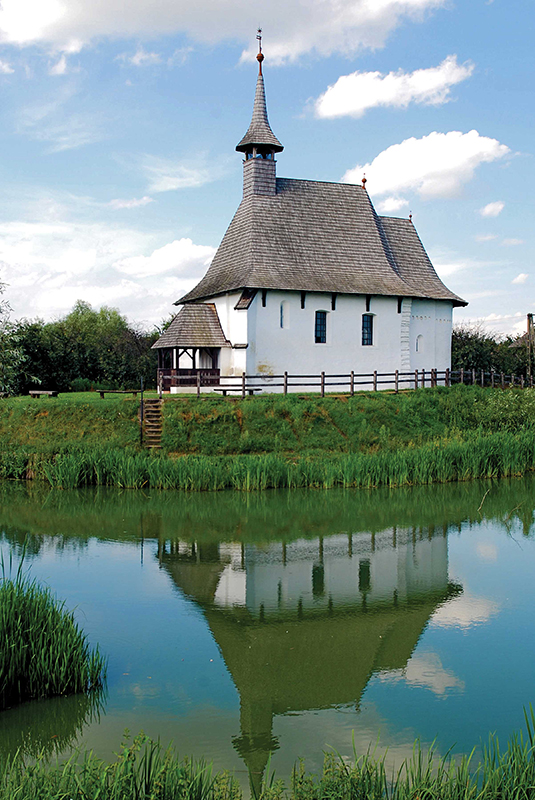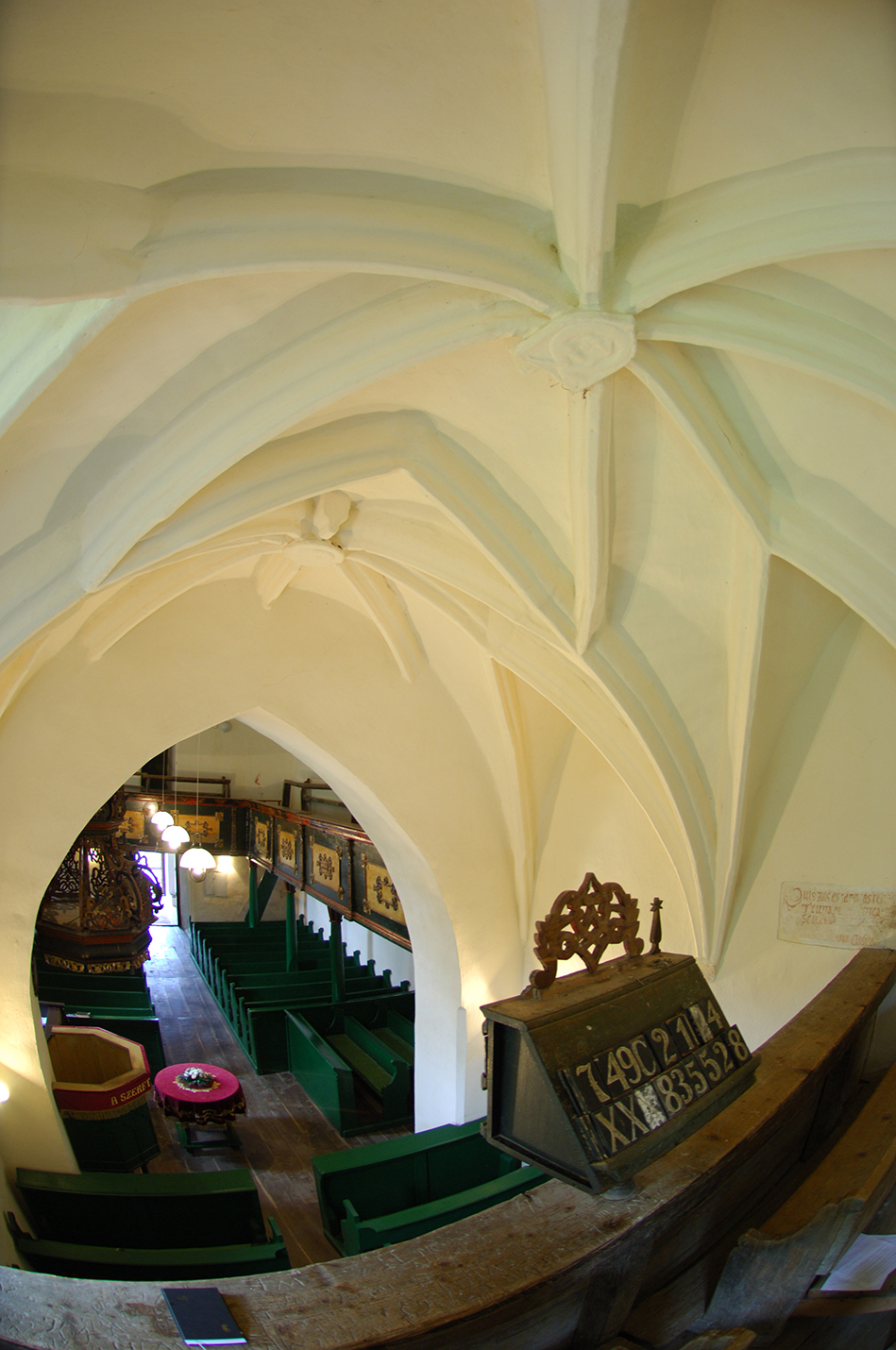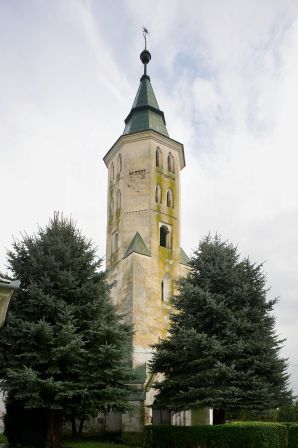 The first phase - 2009-2011
The first phase - 2009-2011
The “Route of Medieval Churches in Szabolcs-Szatmár-Bereg and Satu Mare counties” tourism development program, co-financed by the Hungary-Romania Cross-Border Co-operation Programme 2007-2013, was created in 2009-2011 with the partnership of the Self-Government of Szabolcs-Szatmár-Bereg Coutny and Satu Mare County Council. The aim of this development was to connect the medieval churches with outstanding heritage tourism and art historical value to each other and to improve them to a common tourism thematic route in the Hungarian-Romanian border region providing joint marketing activity and touristic information. Despite the high historical, art historical, historical and monumental values, the churches of the region have particularly low attendance, with a few exceptions. The project resulted thematic route includes 33 churches. From the territory of the historical Szatmár, a chain of 20 Hungarian churches (Csegöld, Csenger, Csengersima, Fehérgyarmat, Gacsály, Gyügye, Jánkmajtis, Kisszekeres, Kölcse, Nagyar, Nagygéc, Nagyszekeres, Sonkád, Szamosbecs, Szamostatárfalva, Szamosújlak, Tiszakóród, Túristvándi, Túrricse, Vámosoroszi,) and 13 Romanian churches (Ákos, Avasfelsőfalu, Bikszád, Egri, Kaplony, Krasznabéltek, Sárközújlak, Szilágykorond, Tasnád, Vetés, Bere, Csomaköz és Krasznacégény) constitute the route. The routes’s official website was already born: www.temple-tour.eu. A comprehensive research was completed, which presents the ecclesiastical heritage of the medieval Szatmár in the context of a representative volume (Medieval church architecture in Szatmár. Route of Medieval Churches in Szabolcs-Szatmár-Bereg and Satu Mare counties - Arhitectura religioasă medievală din Satu Mare. Circuitul bisericilor medievale din judeţele Szabolcs-Szatmár-Bereg şi Satu Mare). The completed first phase has a board system of the route, as well as the created necessary publicity promotional toolkit.
The second phase 2012-2013_meret.jpg)
The idea of extention of the route has been emerged during the year of 2010. The Szabolcs-Szatmár-Bereg County Regional Development and Environmental Management Agency Nonprofit Ltd. jointly with in Transcarpathia County Council initiated the work related to the extension. In 2010, the organization submitted an application under the Hungary-Slovakia-Romania-Ukraine ENPI CBC Programme, with the project title of the "Tourist route to the common religious and cultural heritages". As a continuation of the above mentioned program, 32 new churches was involved in, 17 ones from Szabolcs-Szatmár-Bereg County, while 15 churches from the area of Transcarpathia County. The extension involves the Bereg part of Szabolcs-Szatmár-Bereg county, Upper-Szabolcs and Middle-Nyírség; from the territory of Transcarpatia, not far from the Hungarian-Ukrainian border line, mostly Hungarian-inhabited areas have been connected in, where there is a high degree of medieval monument group of church. By the extension of the route, Anarcs, Beregdaróc, Beregsurány, Csaroda, Laskod, Lónya, Márokpapi, Szabolcs, Székely, Tákos, Tarpa, Tiszaszentmárton, Tornyospálca, Vaja, Vámosatya Reformed churches and Baktalórántháza and Kisvárda Roman Catholic churches were included in the route. From Transcarpatia, Akli, Bene, Csetfalva, Feketeardó, Huszt, Nagybégány, Nagymuzsaly, Palágykomoróc, Técső and Visk Reformed churches, Beregszász, Munkács, Nagyszőlős Roman Catholic, and Gerény and Ungvár Greek Catholic churhces became a part of the Route of Medieval Churches. As a result of route development, the thematic route crosses three countries, thereby a determining thematic route was created of the Carpathian Basin. The second phase generally identified and completed research and marketing targets; the necessary basic research for product development has been done and the thematic route was introduced into the market.

In 2013, the next and biggest scale development of the Route of Medieval Churches could go forward. In the frame of the project titled “Tourism attraction of the Route of Medieval Churches”, the thematic route was undergone an attraction-oriented development in several points of Szabolcs-Szatmár-Bereg and Satu Mare county sections with a visitor-friendly development of the churches. The project is one of the largest-scale and importance of heritage conservation and tourism development project in the region of recent years, with the total investment cost of 1.480.887 EUR. During the third phase, the first infrastructural wave of the Route of Medieval Churches’ attraction development took place. Some 18 churches involved in large-scale development, of which 11 ones from Szabolcs-Szatmár-Bereg county, and 7 of Partium churches. The significant breakthrough of the program is that a secular initiative could transform an ecclesiastical initiative, as the development was realized by the Tiszántúl Reformed Diocese, the Királyhágómellék Reformed Diocese and the SZSZBMFÜ Szabolcs-Szatmár-Bereg County Regional Development and Environmental Management Agency Nonprofit Ltd.
Within the project, historic preservation restoration works took place in Kölcse and Gacsály Reformed churches (Szabolcs-Szatmár-Bereg County), as well as in Bere, Krasznacégény, Csomaköz Reformed churches (Satu Mare County). Rather spectacular and significant is the restoration of the diaspora church of Csomaköz, which was saved from destruction. As a part of the program, the nearby Berea Reformed Church, which has Satu Mare County’s single fresco, completely renewed. The respectable-sized Romanesque Gacsály Reformed Church, one of the largest medieval churches in the border region, was also undergone significant historic restoration, as Kölcse Reformed Church did. In Túrricse and Szamosújlak smaller Reformed Churches, smaller-scale reconstructions were implemented with the aim of highlighting the churches’ art historical values. Comprehensive restoration works started in the framework of the investment in the Hungarian Reformed Church of Vámosoroszi, result of this the exploration of the church frescoes, as well as several very valuable interior could be implemented. Thanks to the restoration works, the Vámosoroszi medieval Reformed Church have become one of the most spectacular churches of the region. Ákos the Reformed Church, the largest Árpád-era monastery church in Transylvania is undoubtedly one of the most important monuments of the Partium enriched with a visitor centre.
The innovation of the Route of Medieval Churches is the visitor-friendly development model which is a local initiative. The aim is the visitor-friendly development is to introduce the churches, as historical, art historical values to the visitors, not disturbing the intimate spaces of life of faith meanwhile. These visitor-friendly developments were took place in the Reformed churches of Csenger, Gacsály, Gyügye, Kölcse, Sonkád, Szamosújlak, Túrricse, Túristvándi, Nagyszekeres, Kisszekeres, Vámosoroszi (Szabolcs-Szatmár-Bereg county) and of Ákos, Bere, Csomaköz, Egri, Krasznacégény, Vetés, Sárközújlak (Partium) in the frame of the project. The tourists arriving in the churches will get a completely new and different experience. The introduction of the churches are supported by heritage guides, namely short films containing 3D animations and reconstructions, interactive tools and other installations. The 18 exhibition places almost come together like a mosaic: by the end of the tour we will know and understand the heritage of Reformation, the history of the land and the art historical significance of these unique medieval churches.
During the project, those marketing toolkit continued to be done, which can contribute in improving the program marketing communication. A representative publication showing the Route of Medieval Churches was done, as well as the brochures having interesting information about thet churches. Th e development of the board system continued, primarily positioning of tourism boards happened on the roads, offering reference points to the tourists in frequented places. PR films were created to promote the Route of Medieval Churches. The web-site development also continued, which resulted undoubtedly one of the most exciting and spectacular web interface. A focused international marketing campaign promoting the Route of Medieval Churches was also implemented.
e development of the board system continued, primarily positioning of tourism boards happened on the roads, offering reference points to the tourists in frequented places. PR films were created to promote the Route of Medieval Churches. The web-site development also continued, which resulted undoubtedly one of the most exciting and spectacular web interface. A focused international marketing campaign promoting the Route of Medieval Churches was also implemented.
The Route of Medieval Churches set the objective, in 2009, to raise the public attention to the medieval heritage of the Upper-Tisza region, the Partium and Transcarpathia. However, the program managed to get much farther. More Hungarian and Romanian churches of the border area with outstanding importance undergone through historic restoration by EU support and generated a focused development program was generated. There are several monuments scattered will be renewed in the Partium that their chances of survival have faded due to the decreasing number of his congregation in the last decades. The Route of Medieval Churches has developed and expanded very dynamically over the years and is now one of the most important tourism products having huge development potential for the region. The program gained national religious, political and professional support in recent years; in December, 2012, it gained the “With the recommendation of the Northern Great Plains region" award from the North-Plain Marketing Directorate, thus officially recognizing the touristic and cultural importance of the route.


